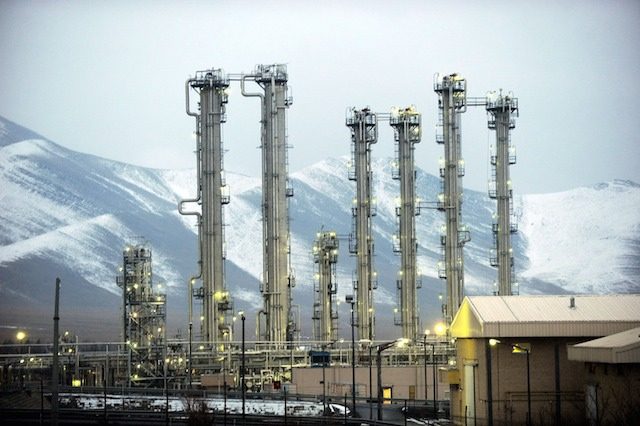SUMMARY
This is AI generated summarization, which may have errors. For context, always refer to the full article.

VIENNA, Austria – The nuclear deal being sought by 6 world powers this week in Vienna will not completely remove the possibility that Iran might, in theory, one day be able to build an atomic bomb.
This is because the mammoth accord, if it can be struck by Monday’s (November 24) deadline, would leave intact at least some of the Islamic republic’s nuclear facilities.
So instead, the name of the game for the five permanent members of the UN Security Council plus Germany (the P5+1) is to expand the so-called “breakout” time.
This is generally taken to mean how long Iran would need, were it to choose to do so – and it hotly denies any such aim – to produce one bomb’s worth of fissile material.
Making this time period longer, the thinking goes, would give the international community ample notice of any such drive – and be able to stop it.
“We must be confident that any effort by Tehran to break out of its obligations will be so visible and time-consuming that the attempt would have no chance of success,” chief US negotiator Wendy Sherman said in September.
How to build a bomb
There are two possible options for the business bit of a nuclear weapon: plutonium – North Korea’s choice – or highly-enriched uranium, as used in the US bomb that flattened Hiroshima, Japan in 1945.
Plutonium can be extracted from spent nuclear fuel rods. Western powers fear that a reactor Iran was until January building at Arak could produce a bomb’s worth per year.
Iran however is not thought to possess a facility needed to extract the plutonium, and a secret one would be easily detected. Arak would also have to run for at least a year before plutonium can be obtained.
Of greater concern is uranium.
Enriching uranium raised the percentage of a certain isotope using centrifuge machines. For nuclear power 3.5-5.0% is needed, 20% is for medicines and 90% for a bomb.
Iran is already enriching to low levels and until January was doing so to 20%. It is not thought to have purified to weapons-grade – although it has the know-how and the equipment.
Interim achievement
Under last November’s interim deal with world powers, which expires on Monday, Iran took various measures including halting enrichment to 20% and neutralizing its stock of this material.
This extended the “breakout” time from under two months to between 3 and 4 months, nuclear expert Mark Fitzpatrick at the International Institute for Strategic Studies told Agence France-Presse.
But in the final accord the P5+1 want the “breakout” extended to around a year, said Kelsey Davenport at the Arms Control Association.
This could be achieved by Iran slashing the number of centrifuges from the current 19,000, of which around half are operating.
In addition, Iran could reduce its stockpile of low-enriched uranium – some 8,000 kilos, enough for eight bombs if further enriched – by exporting it, possibly to Russia, or converting it to another form.
David Albright at the Institute for Science and International Security estimates that for a breakout of six to 12 months, Iran would have to cut the number of centrifuges to 2,000-4,000.
Sneakout
Experts stress that the “breakout” concept should however be treated with caution.
It fails to include the additional time needed for Iran to work out how to incorporate the fissile material into a warhead and mount it on a missile, steps which would take many months, experts say.
More likely, some say, Iran would go for a “sneakout” – using facilities that the UN atomic watchdog does not know about.
But this, experts say, would be covered by another part of the mooted deal – greater oversight by the UN atomic watchdog, the International Atomic Energy Agency. – Rappler.com
Add a comment
How does this make you feel?
There are no comments yet. Add your comment to start the conversation.